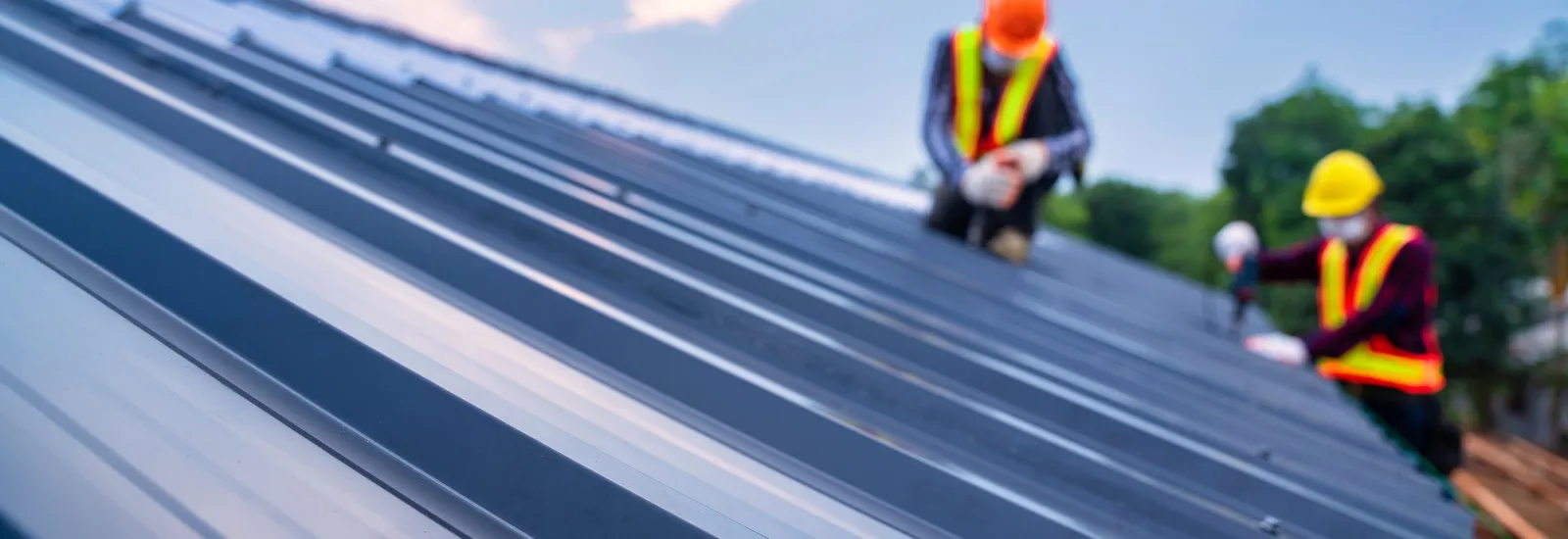If you're thinking of installing any kind of roof system, your primary consideration might be when you'll have to replace the roof and do it all over again. So you want to know the average lifespan of the roof you choose and how the maintenance costs will add up over time. If you're thinking about a metal roof for your home or business, you might be attracted to it for its impressive life expectancy — or maybe the metal is just attracting your magnetic personality.
Either
way, you want to know all the facts before deciding.
In
this blog post, we'll go over how long a metal roof lasts, the advantages to
metal roofing, whether metal roofs last longer than roofs constructed of
alternate materials, and other need-to-know details before making any final
decisions.
How long does a metal roof last?
Metal roofs are known for their longevity, with the average life of a metal roof estimated to be 40 to 70 years depending on the metal material they're made from, according to State Farm Insurance figures. Slate, tile, and copper roofs can last five decades, according to some estimates. For comparison, traditional asphalt roofing materials have a life expectancy of 12 to 20 years before needing replacement, the insurer says.
Do metal roofs last longer than other roofing materials? The metal roof lifespan is one of the longest, but it has a couple of competitors for longevity. Concrete and clay tiles can last a century, according to the National Association of Home Builders and International Association of Certified Home Inspectors. Slate roofing can last 60 to 150 years, according to the same sources. But with metal's lifespan lasting from 40 years at minimum to 60 or 80 years at maximum, it's one of the longest-lasting roofing materials you can find. Asphalt and asphalt shingles, built-up roofing, cellulose fiber, coal and tar, fiber cement, modified bitumen (aka asphalt), TPO, and wood last 30 years or less, according to estimates.
The average lifespan of a roof varies by roofing material, but it's also important to keep in mind that many materials — such as asphalt shingles — have shorter life expectancies in more extreme climates. Here in Florida, the wind, rain, and exposure that commercial and residential roofs contend with mean that some time is often shaved off average roof lifespans.
What are the advantages to metal roofing?
The
benefits of metal roofing include durability, safety, and environmental
friendliness in addition to longevity.
First,
let's talk about durability. Metal roofs can sustain high winds (important
during tropical storms and hurricane weather) of up to 140 mph. They resist
cracking and corrosion, impacts and penetration. All this means they require
less maintenance overall, though it's always good to send out an inspector
periodically to verify there's no need for repairs.
Another advantage is safety, particularly in the form of fire resistance. Metal roofs won't spark and burst into flames if struck by lightning or if the building's exposed to wildfires.
Metal roofs also bring environmental
benefits in terms of energy efficiency and recycling capabilities. Metal roofs
can reflect UV and infrared light rays from the sun that contribute to surface
radiant heat on the roof. The light bouncing off can drop the building owner's
cooling costs from 10% to 25%, State Farm estimates. On top of that, metal
roofs are completely recyclable and contain up to 95% recycled content. Other
options like shingles create literal tons of waste each year.
With benefits also come drawbacks. Metal
roofs can be more expensive to install than roofs made of other roofing
materials. They can also prove loud and noisy when anything falls on them, such
as hail during a thunderstorm. Though adding insulation can abate this problem,
that adds cost to the project.
Another potential problem is difficulty
in matching colors and styles when repairs are required. If you extend your
home years after the original build, it might be tricky to exactly match your
existing metal.
Finally, there's the matter of
performance. If the metal roof isn't installed well by knowledgeable
professionals, water could accumulate on the roof and eventually create serious
damage. Some metals rust in certain climates (like Florida's) or dent during
hailstorms.
Want more information on metal roofs to last you a lifetime?
Metal roofing systems, also known as
standing seam roofs, are growing in popularity because of their availability in
various colors and profiles and because of the aforementioned benefits that
attract building owners, both commercial and residential. Though the upfront
investment may be greater than with tile roofs, the low maintenance
requirements may result in lower lifetime costs than the alternatives to metal.
Want to ask questions or get a quote? Contact
us today
for immediate assistance and answers on financing options.
